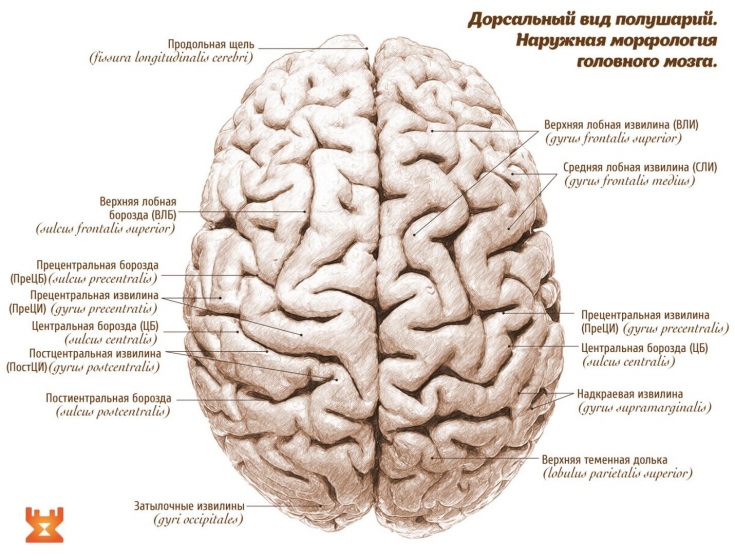If our brain is not given a systematic load, then it relaxes and becomes "lazy"; – like untrained muscles.
But constant loads make the cells of the gray matter of the brain grow. According to scientists, brain training stimulates the formation of new neuronal synapses and functional connections, the cerebral cortex thickens and more convolutions appear on it.
However, given that the – education is more complex than muscles, then he needs exercises that are also not simple. found out about them and will tell estet-portal.com.
1. Gymnastics for convolutions – neurobics improves memory and mental abilities
2. A complex of defective exercises for the brain
3. Morning Exercise for the Brain by Arthur Kramer
Gymnastics for convolutions – neurobics improves memory and mental abilities
The author of this workout is the residents of the USA – writer Manning Rubin and neuroscientist Lawrence Katz. People have been successfully using this technique for 15 years already, choosing the most suitable exercises for themselves from the list proposed by experts.
They outlined their methodology and 83 exercises in the book Fitness for the Mind. Those who have experienced these miracle workouts have noted a significant improvement in intellectual abilities and memory.
To perform these unusual exercises, you will have to use all your 5 senses.
When we perform monotonous daily work, the brain ceases to tune in to more complex work. In this case, attention decreases and memory weakens.
And if ordinary things are done in an unusual way, then this makes the brain work, establishing new interneuronal connections or restoring old ones.
If you decide to train your brain, then get ready for an unusual life, because you will have to perform your usual daily activities in an unusual way. Treat it with humor and add positive emotions to the exercises.
A complex of effective exercises for the brain
Here is a set of 6 simple but very effective exercises:
1. Try to brush your teeth with your left hand (if you are left-handed, then with your right hand) or do up buttons, write a letter, type on a keyboard, and more. Such actions will make your second hemisphere of the brain work and stimulate the development of mental abilities and thinking.
2. Try to engage new senses in everyday activities. For example, identify a coin by touch or move around the apartment with your eyes closed. If you can get hold of a Braille tablet for the blind, then try to master it. Try one day a week to communicate with your family in the language of facial expressions and gestures. These actions give a good load to the sensory areas and neurons of the brain, which work extremely rarely
3. Try experimenting with your image: change your hairstyle and hair color, make-up, wear unusual clothes. What will such actions lead to? A new image will change the way you feel, make you feel different (remember – how the feeling of a woman who wears stilettos changes, or a man who puts on a suit instead of a T-shirt and jeans).
4. You can take another road to work, even if it is longer. Plan various trips to new places both for weekends and holidays. Every time try to choose new places where you have never been. This will allow your spatial memory to develop.
5. Periodically swap furniture in different rooms of the house, start cooking new dishes that you have not cooked before. Change your toilet water. Walk around the house in different shoes.
6. Try to find non-standard answers to standard questions like: "How are you?", "What's new in life?". Try to answer differently every time, think positively, come up with new jokes and jokes and shine with them in conversation.
7. Another option for a new activity – try to become a polyglot. And the more alien language you learn, the more it will "turn on" Your brain.
These actions stimulate the brain to work harder, because novelty stimulates sensory centers, and routine monotonous actions – tiring. Such creativity stimulates the speech center and memory.
Morning exercise for the brain by Arthur Kramer
Physical exercises play an important role in the training of convolutions.
American Arthur Cramer, conducting his research at the University of Illinois, came to the conclusion that a person needs at least 150 minutes of physical activity per week and mandatory daily walking.
This increases the thickness of the cerebral cortex in the frontal and temporal areas, which are responsible for attention and memory.
That is, the usual walks and morning exercises – it is also brain training that will benefit mental activity.
Non-standard actions, different thinking, getting out of the “comfort zone”; and "habit zones" stimulate brain activity and make the brain work. Regular sports light workouts and walks also train the brain.
Thus, we have talked about several well-known methods of training gyri. Effectively doing ordinary household chores in unusual ways, trying to think outside the box, find and intervene in new circumstances, even dress differently or learn foreign languages – all this gives the human brain an incentive to work better.
Don't forget to add walking and exercising regularly to these tips. Be bold and creative, don't be afraid to change something.
Good luck with your gray matter training!
How to improve blood circulation in the brain: the most effective methods
You may be interested in: Memory Test.







Add a comment